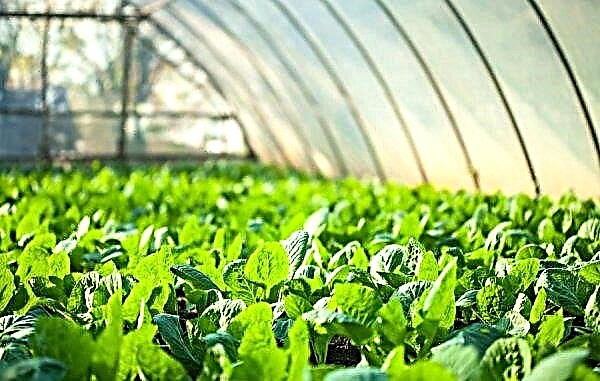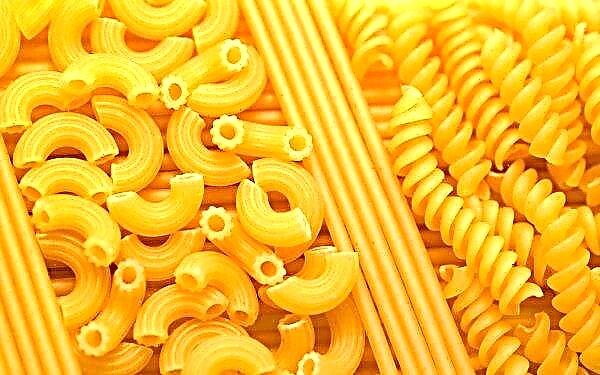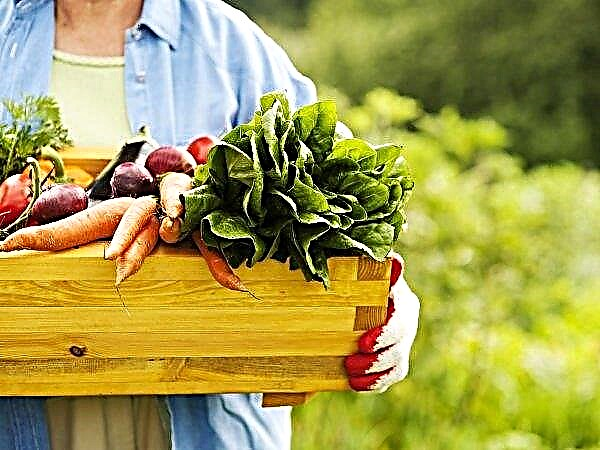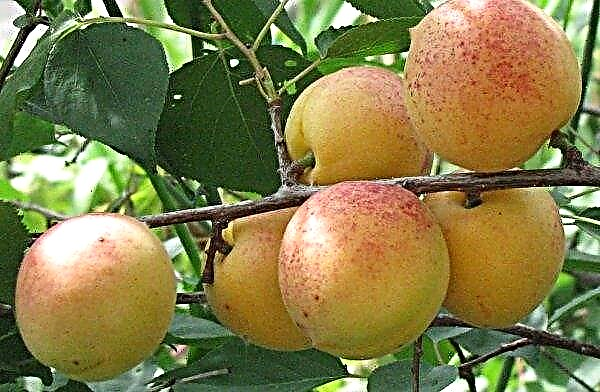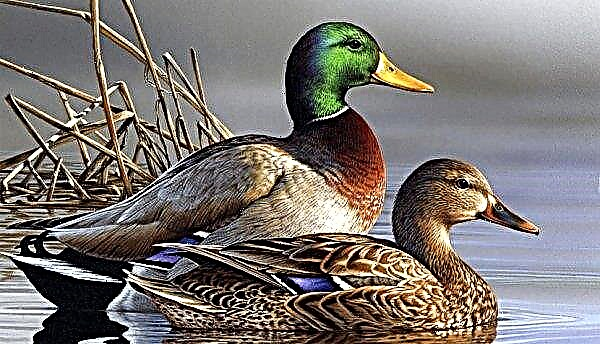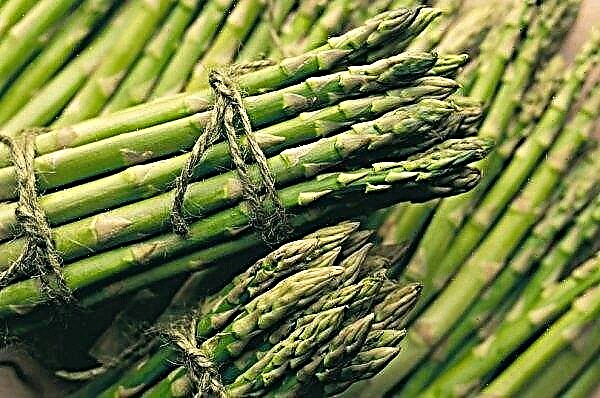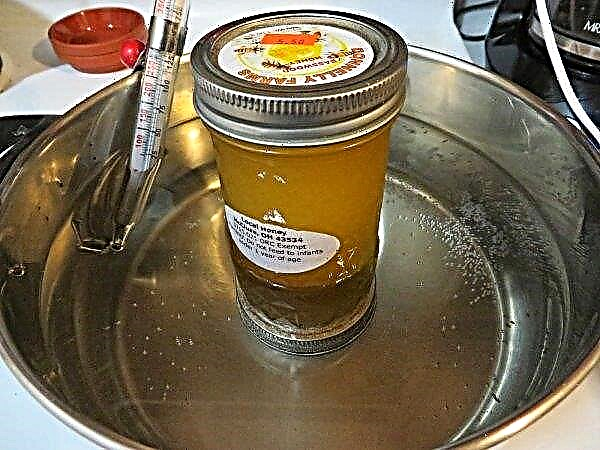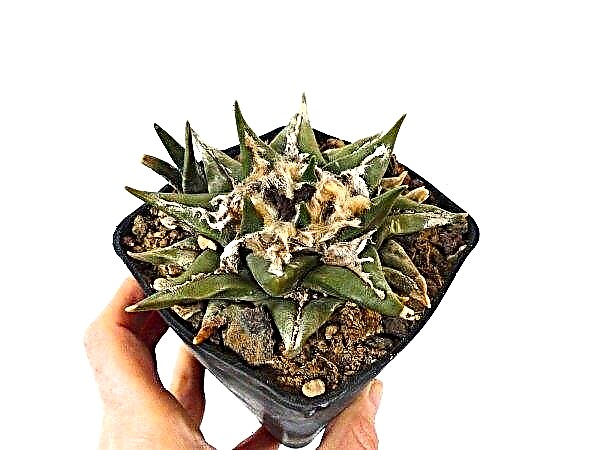White cabbage is a two-year garden plant. In the first year it forms a head out, and in the second year it releases a flower arrow. Typically, most gardeners grow cabbage as an annual plant, since they prefer not to collect seeds but to buy. Among all varieties of white cabbage, the early ones are much appreciated. One of these varieties, Pandione, will be discussed later.
Variety breeding history
The Dutch were engaged in the breeding at the Monsanto agricultural firm. The result was a variety as a hybrid of white cabbage. In 2005, the variety was zoned in the East Siberian, West Siberian, Volga-Vyatka, Central, and Northwest regions.
Description and characteristic
Cabbage Pandion is an ultra-early variety.

Features of heads of cabbage
The leaf rosette of the hybrid is horizontal and is formed from small and medium bubble leaves. Their surface is covered with a slight waxy coating. The edge of the leaf is slightly wavy. Heads of cabbage are rounded in shape, partially covered, weighing 1–2 kg. Above they are a pale green color, in a section of white. Heads of cabbage are quite dense. This indicator is estimated at 4 points. This density allows them to tolerate transportation well. The core on which the head of cabbage is formed is of medium length inside and short outside.
Important! Heads of cabbage are able to be stored for a long time on the vine and not crack.
Timing of flowering and ripening
Flowering plants are possible when planting the head of head in the second year. The timing of the appearance of the peduncle depends on the climate of the growing region. This usually happens in May.
From the appearance of seedlings to the technical ripeness of a head of cabbage, 85-110 days pass. If the growing season is counted from the moment the seedlings are transplanted to a permanent place, then it takes 48–53 days to mature. When sown in mid-March and transplanted in late April, the first crop can be harvested in June. For an earlier harvest, greenhouse cultivation is recommended.
For an earlier harvest, greenhouse cultivation is recommended.
Marketable yield is 280-513 kg / ha. With greenhouse cultivation - 520 kg / ha. At the first harvest, you can get 60-100% of the total crop. The output of marketable products is 95%.
Frost resistance
The plant is frost-resistant, as evidenced by its regionalization in cold regions. Well-trained seedlings and planted in open ground can withstand a short-term drop in temperature to -5 ... -6 ° C.
Did you know? Pythagoras claimed that he owes his longevity to the regular use of large quantities of cabbage.
Pros and cons of the variety
- The positive features of the Pandion hybrid include the following:
- high taste;
- friendly ovary of heads of cabbage;
- frost resistance;
- high productivity;
- excellent presentation;
- resistance to fusarium;
- tolerates transportation well;
- good standing on the vine, does not crack;
- Suitable for growing in open and closed ground.
Among the shortcomings, they note only that when grown in open ground, productivity is significantly reduced.
Growing seedlings
Seedlings can be grown both at home, on the windowsill, and in greenhouses.
 Growing is possible both in seedling method and sowing in open ground
Growing is possible both in seedling method and sowing in open ground
Seeding dates for seedlings, selection and preparation of soil
Sowing dates depend on where it is planned to grow cabbage: in greenhouses - from the end of March, in film greenhouses - from the beginning of March. The soil mixture can be purchased ready-made (universal or for seedlings) or prepared independently by mixing peat, ripened humus, partially rotted sawdust, turfy soil and sand. The ratio of components in percent is as follows:
- peat / turf land / sand - 75/20/5;
- humus / sod land / sand - 45/50/5.
Important! The acidity of purchased and self-prepared soil mixtures should be 6–6.5 pH.
Preplant seed treatment
Before planting, seeds are selected with a size of 1.6 or more millimeters. They are soaked in a weak solution of potassium permanganate for 20 minutes. For better germination, you can soak in growth stimulants according to the instructions for the drug.

Seedling Care
Thickly sown seeds in a greenhouse or seedling boxes can begin to emerge at + 2 ... + 3 ° С. The optimum germination temperature is +18 ... + 20 ° С. Friendly seedlings must be thinned out so that only the strongest seedlings remain. Seedlings grow at + 20 ... + 21 ° С. A week after germination, the temperature drops to + 13 ... + 17 ° C.
Video: Padion cabbage seedlings
Water the seedlings as needed with warm water (+ 18 ... + 19 ° C). After the appearance of several leaves, the seedlings are picked in plastic cups.
 After the appearance, the first shoots are thinned out, leaving only the strongest and largest plants
After the appearance, the first shoots are thinned out, leaving only the strongest and largest plants
Transplanting seedlings in the open ground
Grown, matured and hardened seedlings are transplanted into the open ground.
Transplant Dates
A seedling ready for transplanting - with 6–7 true leaflets aged 1.5 months. The transplant is carried out when the soil warms up to + 13 ° C, and the air - up to + 18 ... + 19 ° C.
Important! It is advisable that the landing took place in cloudy, rainy weather.
Seat selection
It is best to form a cabbage bed on light soils in a place where the earth first warms up with the advent of spring. Bean, pumpkin, winter, and onions will be ideal culture precursors.
Video: Cabbage Padion in the field
Scheme and depth of landing
Planting is carried out according to this scheme: 25–28 cm between seedlings, 45–50 cm between rows. When placing a plant in a hole, you need to make sure that its growth point is above the surface of the earth.
 It is best that the soil level in a constant place corresponds to the soil level that the plant had in a cup
It is best that the soil level in a constant place corresponds to the soil level that the plant had in a cup
Cabbage care
Most cabbage needs watering and nutrients.
Watering and fertilizer
A moisture-loving culture with poor soil and air humidity grows poorly, produces few leaves and forms small heads of cabbage, so it is advisable to maintain soil moisture at 75–80%. For this, 350–400 m³ / ha should be consumed for irrigation before heading out and 400–450 m³ / ha after. You can use the drip irrigation system along with the introduction of water-soluble fertilizers. This will evenly moisten the soil and deliver nutrients to the root system faster.
Did you know? Alexander of Macedon insisted that his military commanders, who were overweight, ate cabbage leaves daily for lunch.
Feeding is carried out twice during the growing season, at its beginning and end. You can use rotted bird droppings (0.6–0.8 kg / m²) or rotted manure (0.3–0.5 kg / m²). The first fertilizer application is carried out 12-14 days after the seedlings are planted in the ground, and the second - 14-20 days after the first.

Soil care
After each irrigation procedure or rainfall, it is necessary to fluff up the bed so that a crust does not form on the surface of the earth. Together with loosening, weeding is also carried out. The first hilling is carried out one and a half to two weeks after transplanting seedlings to a permanent place, and again on the 40th day of seedling life.

Pest and Disease Control
Pandion is resistant to Fusarium, but other adversities can attack it. Most cabbage annoys spring cabbage fly. When the soil warms up to + 12 ... + 13 ° С, the fly begins to lay eggs in the root neck of the plant or in the soil. Destroy the future generation of the insect can be insecticides.
 Pest is prevented by observing the rules of plant agricultural technology and regular preventive treatment.
Pest is prevented by observing the rules of plant agricultural technology and regular preventive treatment.
Harvest Dates
In a state of technical ripeness, the head of Pandion weighs 0.5-0.7 kg. When they reach these indicators, you can carry out the first harvest. Harvesting is carried out in dry weather, so that the heads of cabbage are dry, otherwise they must be dried before being stored. The crop is stored in a cool room in paper or sand, or suspended by a stump.

The early Pandion hybrid is great for growing in cold regions. He does not require too much attention, the main thing is to be regularly watered and fed, and then he will enjoy a good harvest.

